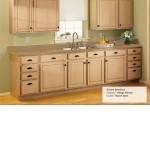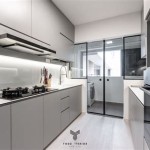Faux Kitchen Cabinets: An Essential Guide to Functionality and Style
When it comes to kitchen design, functionality and style are of utmost importance. Faux kitchen cabinets offer an exceptional blend of these two aspects, providing homeowners with a myriad of benefits. This comprehensive guide will delve into the essential aspects of faux kitchen cabinets, exploring their advantages, materials, and design possibilities.
Advantages of Faux Kitchen Cabinets
Affordability: Compared to solid wood cabinets, faux kitchen cabinets are significantly more affordable, making them an excellent option for budget-conscious homeowners.
Durability: Faux kitchen cabinets are constructed with durable materials that resist wear, moisture, and heat damage, ensuring longevity in high-traffic areas.
Variety of styles: Faux cabinets come in a wide range of styles, from classic to modern, allowing homeowners to seamlessly match the overall design aesthetic of their kitchen.
Materials Used in Faux Kitchen Cabinets
- Laminate: This affordable and durable material mimics the look of real wood or stone, providing a realistic aesthetic.
- Thermofoil: A flexible material that is bonded to cabinet doors, creating a seamless and moisture-resistant surface.
- Acrylic: A high-gloss material that reflects light, enhancing the spaciousness of a kitchen and adding a modern touch.
- Veneer: A thin layer of real wood applied to a substrate, providing the beauty and texture of natural wood at a lower cost.
Design Possibilities
With faux kitchen cabinets, homeowners have endless design possibilities:
- Custom finishes: Faux cabinets can be customized with different finishes, such as distressed, crackled, or glazed, to add character and depth.
- Unique textures: Faux materials can mimic the tactile sensations of various surfaces, ranging from smooth to textured, creating visual interest.
- Mix and match: Combining different faux materials or styles can result in an eclectic and stylish kitchen design.
Maintenance and Care
Maintaining faux kitchen cabinets is relatively effortless:
- Regular cleaning: Regularly wipe down surfaces with a damp cloth to remove dirt and grime.
- Protect from moisture: Avoid exposing faux cabinets to excessive moisture, as it can damage the material.
- Avoid harsh cleaners: Use mild, non-abrasive cleaners to prevent damage to the finish.
Environmental Considerations
Faux kitchen cabinets can be an environmentally friendly choice:
- Reduced deforestation: Unlike solid wood cabinets, faux materials do not contribute to deforestation.
- Recycled content: Some faux materials are made from recycled content, reducing waste and promoting sustainability.
- Energy efficiency: The production of faux materials typically requires less energy than the production of solid wood, contributing to energy conservation.
Conclusion
Faux kitchen cabinets are a versatile and affordable solution for homeowners seeking both functionality and style. Their durability, design flexibility, and ease of maintenance make them an excellent choice for kitchens of all shapes and sizes. Whether you prefer a traditional or contemporary aesthetic, faux kitchen cabinets offer endless possibilities to create a dream kitchen that meets your unique needs and preferences.

Kitchen Cabinet Faux Panels Lowe S

Faux Painting Kitchen Surfaces Walls Cabinets Floors Countertops

Faux Painting Kitchen Surfaces Walls Cabinets Floors Countertops

Creative Cabinets Faux Finishes Llc Ccff Kitchen Cabinet Refinishing Picture Antique White Rustic

Kitchen Faux Painted Cabinets Traditional Houston By Innovation Painting Co Houzz Ie

Kitchen Cabinet Faux Panels Lowe S

Kitchen Cabinet Glazing Mr Faux

Faux Painting Kitchen Surfaces Walls Cabinets Floors Countertops

Kitchen Pantry Behind Faux Cabinet Doors Cottage

Gray And Dark Brown Glaze On Antiqued Faux Finish Cabinet In 2024 Antique White Kitchen Off Cabinets Glazed








